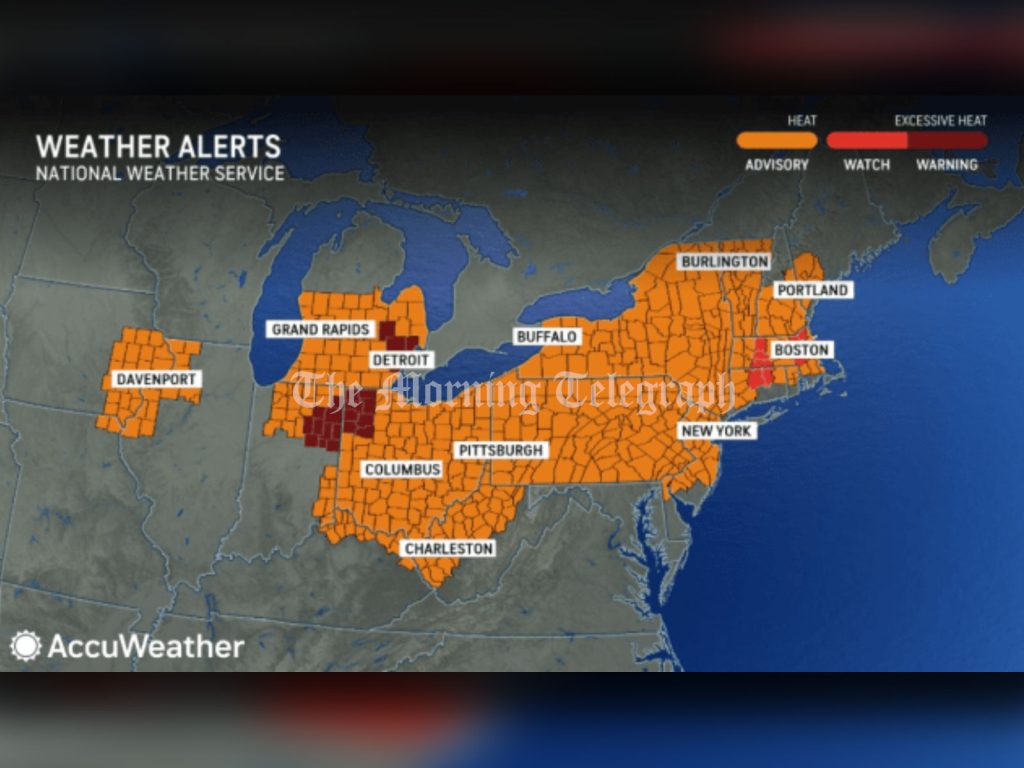
By Julian Jansen
A significant and long-lasting heat wave, driven by an intense heat dome, is currently impacting the Midwest and Northeast regions of the United States. This extreme weather event is setting the stage for the beginning of summer with unprecedented high temperatures, potentially breaking hundreds of records throughout the week.
The National Weather Service’s Weather Prediction Center has indicated that parts of the Midwest and Northeast could experience the longest heat wave in decades. The heat dome is expected to cause temperatures to soar to levels typically seen only during the hottest days of July, potentially shattering multiple all-time high temperature records for June.
Record-High Temperatures and Heat Indices
Residents across the East, from the Midwest to Maine, will face temperatures well into the 90s, with heat index values – the “feels-like” temperature due to humidity – reaching into the low 100s. Wednesday and Thursday are predicted to be the peak of this heat wave, although the surrounding days will still be significantly hot. Major metropolitan areas such as Chicago, St. Louis, Detroit, Cleveland, Pittsburgh, New York City, and Boston are all expected to experience dangerous heat levels.
Over 260 million people in the eastern half of the U.S. will see temperatures reach or exceed 90 degrees this week. In some areas, temperatures will be 15 to 20 degrees above normal, with some places experiencing highs up to 25 degrees above average. Cities like Montpelier, Vermont; Syracuse, New York; and Pittsburgh haven’t seen such intense heat in approximately 30 years.
Heat Protocols and Safety Measures
In response to the extreme heat, several cities have initiated heat protocols. New York City will open cooling centers and distribute cooling kits to outdoor workers starting Tuesday. Burlington, Vermont, will also activate cooling centers, and Cleveland will extend hours at recreation centers and suspend playground programs for the week.
Health Risks and Precautions
The heat dome creates oven-like conditions, with each day becoming progressively hotter. Overnight temperatures will remain high, often only dropping to the mid-70s, providing little relief from the heat and increasing the risk of heat-related illnesses. The Weather Prediction Center emphasizes the importance of adequate cooling, particularly for those without reliable air conditioning.
High humidity levels will exacerbate the heat, pushing heat indices to triple digits in some areas. Chicago residents could experience heat indices between 95 and 105 degrees, while parts of eastern New York and western New England might see indices as high as 107 degrees.
The NWS in Detroit has issued warnings for residents to practice heat safety, including staying hydrated, avoiding strenuous outdoor activities, and checking on vulnerable neighbors. Extreme heat poses a significant risk, especially to the elderly, young children, and outdoor workers. Historically, heat waves are the deadliest form of severe weather, causing more fatalities annually than tornadoes and hurricanes combined.
Climate Change and Future Outlook
Scientists warn that heat waves will become more frequent and severe due to the ongoing climate crisis. As the planet continues to warm, the intensity and duration of such extreme heat events are expected to increase, posing greater challenges and health risks in the future.




